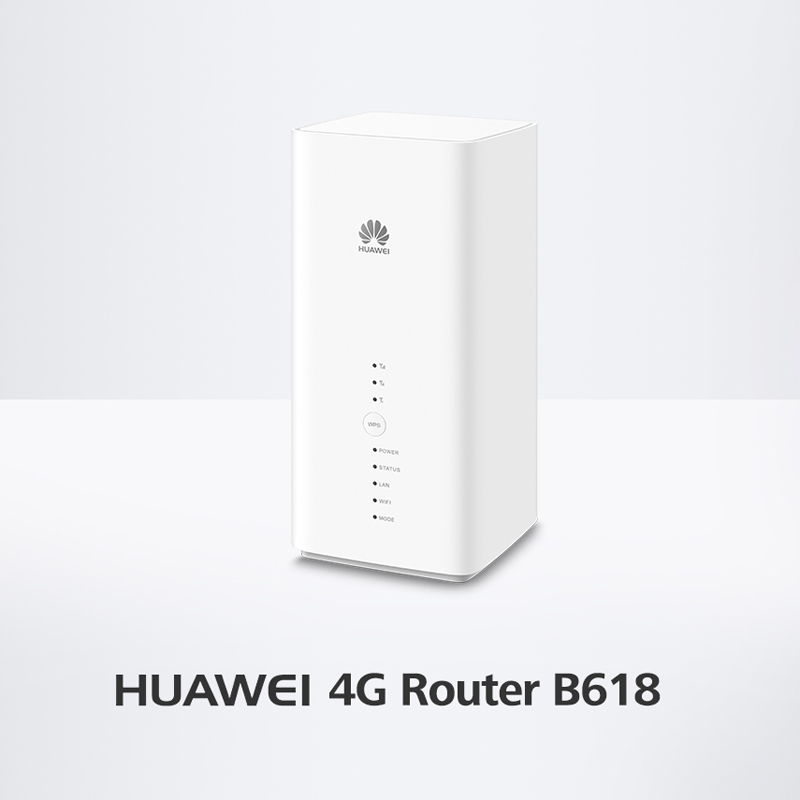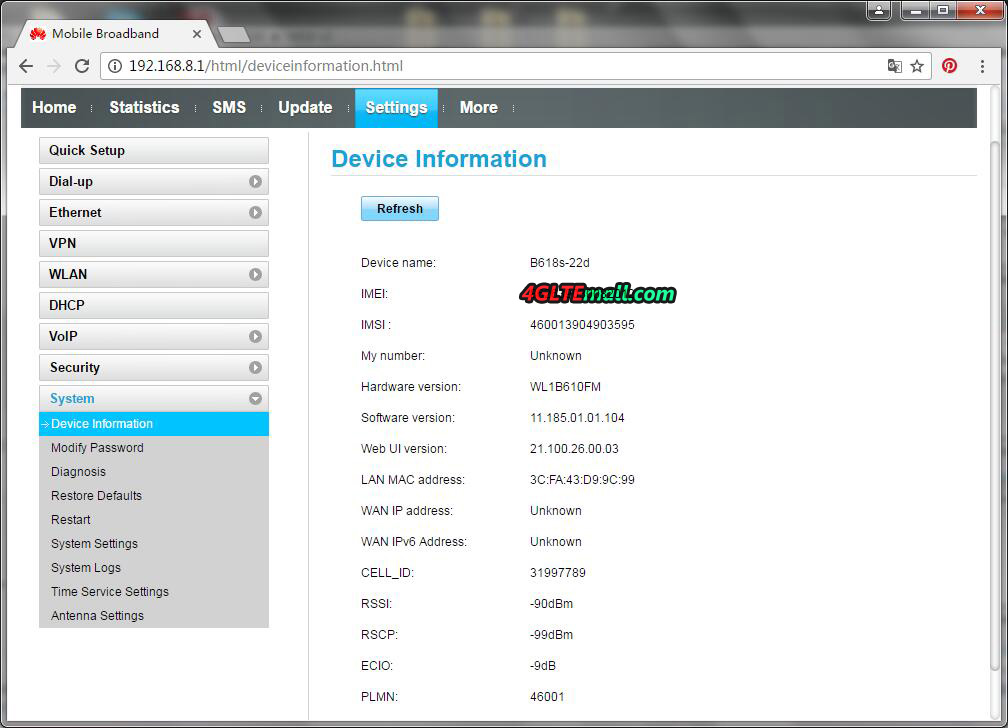In the forest of 4G WiFi routers presented by the manufacturers, LTE routers sometimes are only available in certain countries. Now the new member Huawei B618 joins the family of 4G category 11 routers. As a reminder, category 11 (3GPP rel .12) allows a downstream peak rate of 600 Mbps and 50 Mbps upstream. LTE Category 11 specifies the aggregate of 3 carriers (256 QAM) in download for a single upload frequency. MIMO 2×2 and 4×4 support are possible.
Huawei B618 data rates announced by the manufacturer Huawei:
– LTE FDD: 4 * 4 MIMO + 2CA 582Mbps
– LTE TDD: 4 * 4 MIMO + 2CA 426Mbps
– DC-HSPA+: DL 42 Mbit / s, UL 5.76 Mbit / s
– HSPA+: DL 21 Mbit/s (64QAM) / 28 Mbit/s (MIMO), UL 5.76 Mbit/s
– HSPA: DL 14.4 Mbit/s, UL 5.76 Mbit/s
– WCDMA PS: 384 kbit/s
– EDGE: DL 296 kbit/s, UL 236.8 kbit/s
– GPRS: 85.6 kbit/s
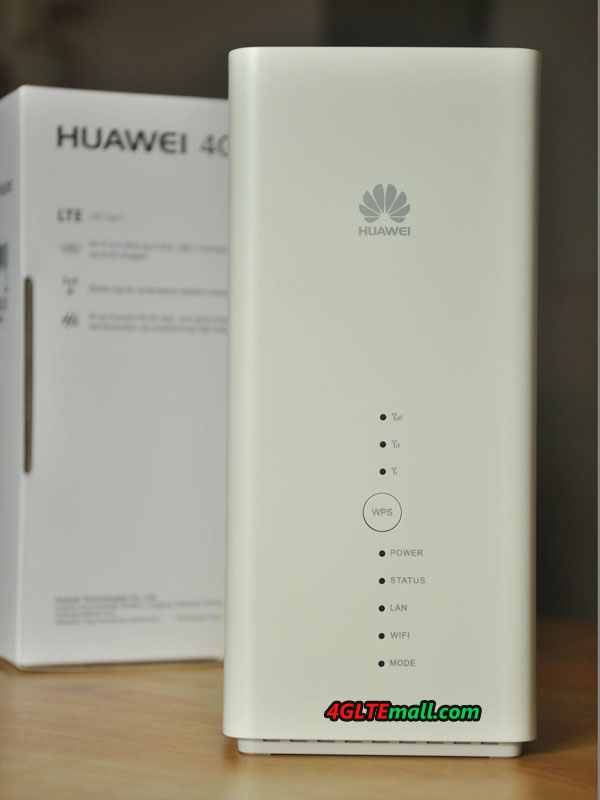
And Wifi rates offered:
– 802.11b/g/n up to 300 Mbps
– 802.11a/ac up to 1300 Mbps
On the WiFi side, the WLAN module supports the 802.11ac standard with 2.4 GHz and 5 GHz frequencies for a maximum speed of 1300 Mbps (cumulative).
We get the model Huawei B618s-22d, and it supports below the LTE/4G/3G/2G Frequency bands:
– LTE: B1/3/7/8/20/38
– FDD: 2100 MHz/1800 MHz/2600 MHz/900 MHz/800 MHz
– TDD: 2600 MHz
– Intra-band contiguous: CA_1C, CA_3C, CA_7C, CA_8B, CA_38C
– Inter-band : CA_1A-3A, CA_1A-20A, CA_3A-7A, CA_3A-20A, CA_7A-20A, CA_20A-38A
– DC-HSPA+/HSPA+/HSPA/UMTS : Band 1/8 2100MHz/900MHz
– EDGE/GPRS/GSM : Band 2/3/5/8 1900MHz/1800MHz/850MHz/900MHz
The network compatibility makes Huawei B618s-22d would work well in almost all the countries in Europe, Asia and middle East, but as we mentioned at the beginning of this article, the Huawei B618s-22d is not marketed in some countries. If you need this router, you may purchase from oversea online trader www.4gltemall.com.
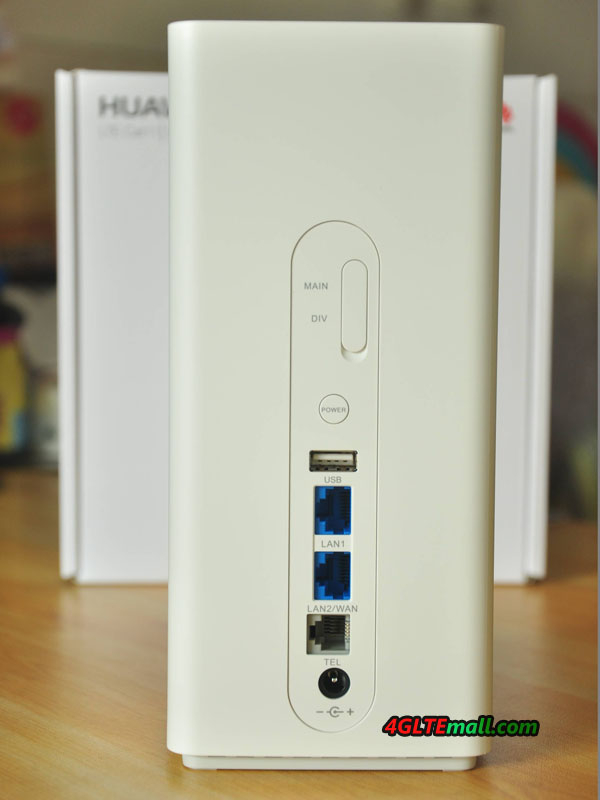
Huawei B618s-22d 4G LTE Router Interfaces:
On the back side, we discover the power button, a WPS activation button. A USB 2.0 port is available for media sharing (under Samba). A Gigabit Ethernet LAN port allows wired distribution and a second port allows either Ethernet or WAN input. This WAN entry option implies the presence of a Failover mode in case of loss of either the WAN link or the 4G link. An RJ11 port is also available for connecting a phone or fax. The AC power connector is located at the bottom, because the B618 does not have an internal battery for a stand-alone mode. Finally, a hatch visible here above the power button conceals the 2 external 3G & 4G antenna connectors in TS-9 format. Under the device is the SIM card slot and the reset button.
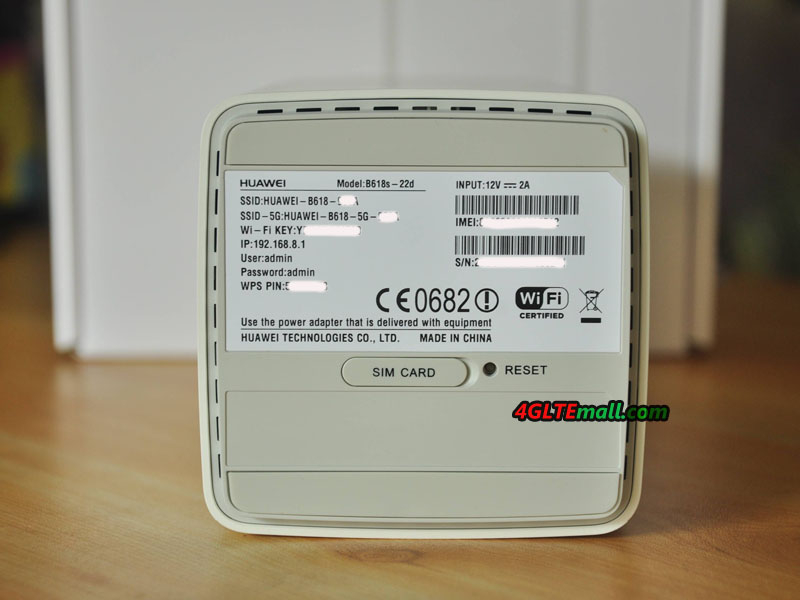
Huawei B618 LTE Router specs
The Huawei B618 router supports 64 simultaneous WiFi connections (32 per band) via 2 internal non-removable antennas. The router offers VoLTE voice compatibility through its RJ11 port , which can be set in VoIP or CS mode (depending on the firmwares probably). It can also support IPv4 and IPv6, DHCP, DNS relay and NAT functions, and the basic protection functions are available (DDNS, deny ping ..).
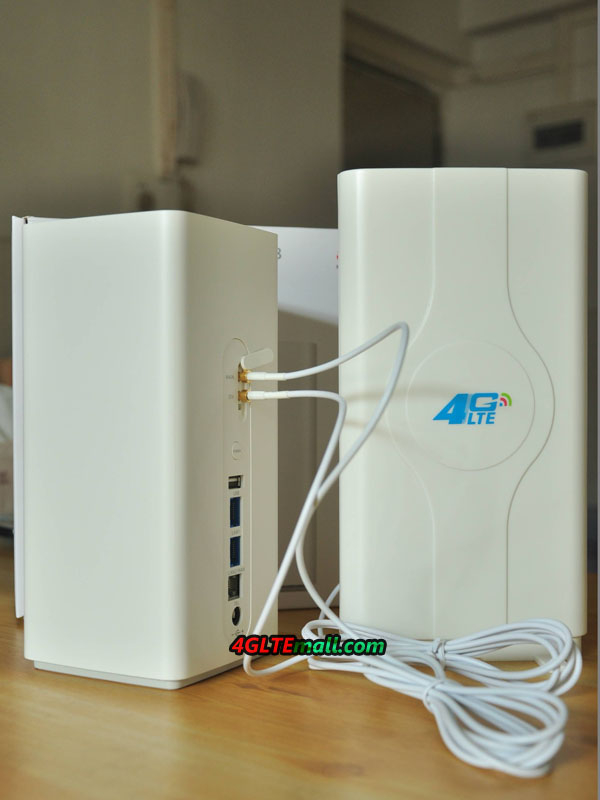
Huawei B618 Firmware
The firmware is very classic “Huawei” as shown on this page. And the Huawei B618 LTE CPE is compatible with the Hilink® smartphone app.
The version Huawei B618s-22d is the one we are talking about here, however, there is another brother versions B618s-65d available on the market, this declination is intended mainly for the following frequencies: Band 1/3/5/7/8/28/40 (FDD 700/850/900/1800/2100/2600MHz & TDD 2300MHz). The 800 MHz is replaced by 700 (B28) and 850 MHz. If you need the Huawei B618 router, just check your network provider deployed 4G LTE networks, if they just covers these bands, you could select Huawei B618s-22d or B618s-65d to get high-level LTE surfing with much faster speed.
